Chances are, if you have a cozy home full of food, it will appeal to rats as much as it does to you. Unfortunately, these crafty animals are almost everywhere that people are. So, what’s the best way to get rid of rats in your home?
How to get rid of rats? To get rid of rats, find and eliminate their nest. Once all of the rats are out of the nest, sanitize the area and seal off all the entrances so they can’t get back in. Using a rat repellent on the spot afterward will add another layer of protection against a re-infestation.
Have a rat problem? Then you’re in the right place! This detailed guide will tell you more about what rats are, what they like, and what they don’t like so that you can make your home people-friendly without unintentionally inviting in unwanted furry pests.
What Is a Rat?
A rat is a member of the rodent family. The most common is the Norway rat, also known as the brown rat. While rats have an important place in our ecosystems and our society, they’re unwanted pests when they’re in your home.
What Does a Rat Look Like?
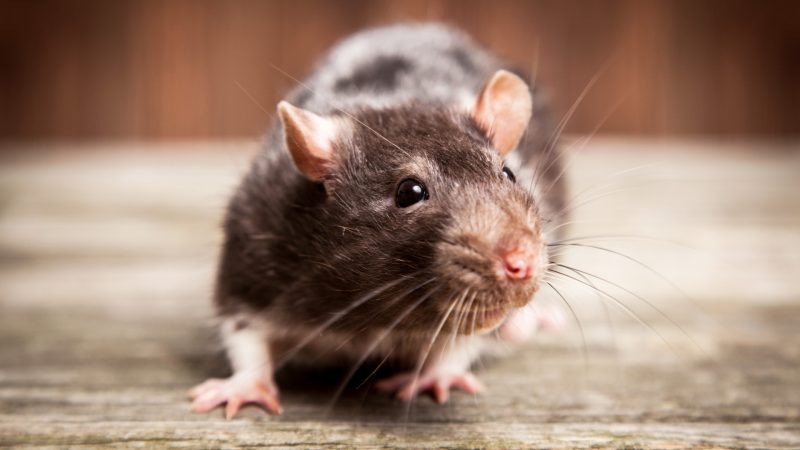
The two most common rat species you might find in your home or on your property are brown rats and roof rats. These rats are usually brown or grey and about 14 inches (35 centimeters) long from the tip of their nose to the end of their tails.
Their bodies are covered in thick, short fur, except for their noses, ears, and tails. They use their tails and whiskers to sense their environment. They have small ears in proportion to their heads; their bodies are large in comparison to their paws, which are small and dextrous with short claws.
Rats have long snouts with three pairs of upper and lower molars and two long, sharp incisors, which grow continuously throughout their lives, and they usually keep them short in the wild by gnawing objects.
How Big Can Rats Get?
The average rat is approximately a foot (0.3 meters) in length. Brown rats average 13 to 15 inches (33 to 38 centimeters), while roof rats, sometimes known as black rats, are smaller, coming in at 7 to 10 inches (17 to 25 centimeters) long.
But the biggest rat in the world isn’t a brown rat or a roof rat, but a Gambian pouched rat, which can be up to 3 feet (90 centimeters) long and weigh about 3 pounds (1.4 kg). Don’t worry, though – these large critters are a different species from the ones you might find in your house.
Where Do Rats Live?
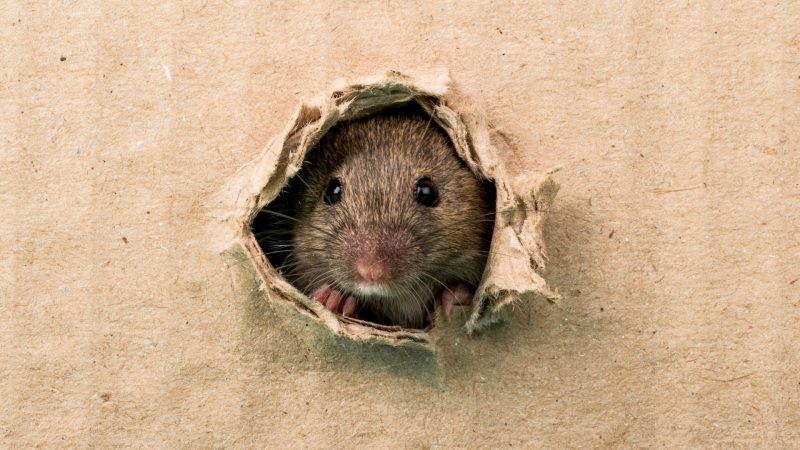
Brown rats prefer to nest near the ground or underground in burrows. Whether they’re living in a populated area or the wild, they make their homes near abundant food sources and in places that are well-protected from predators.
Roof rats tend to roost higher off the ground, as their name implies. They seek the same protection and easy access to food as their brown rat cousins, just higher up.
A rat’s idea of a perfect home can include garages, basements, behind appliances, in barns or other farm buildings, by garbage dumps, or in fields with plenty of vegetation.
Brown rats and roof rats live on every continent in the world except for Antarctica. They spread across the globe on ships from their native homes in Australia and Asia. Now, they’re a part of the ecosystem in practically every country on earth.
How Long Do Rats Live?
The average rat only lives about one year. However, if there’s plenty of food, low competition, and few predators, they can live up to three years. Don’t let their short life spans fool you, though – they’re prolific breeders, so even though they don’t live long, they replenish their populations more rapidly than they die.
A female rat can start having litters as early as three or four months old. Each litter has an average of seven babies, and one rat can have as many as seven litters every year. With each female rat producing about 50 babies per year, a small rat family can quickly balloon into a full rat infestation.
What Do Rats Eat?
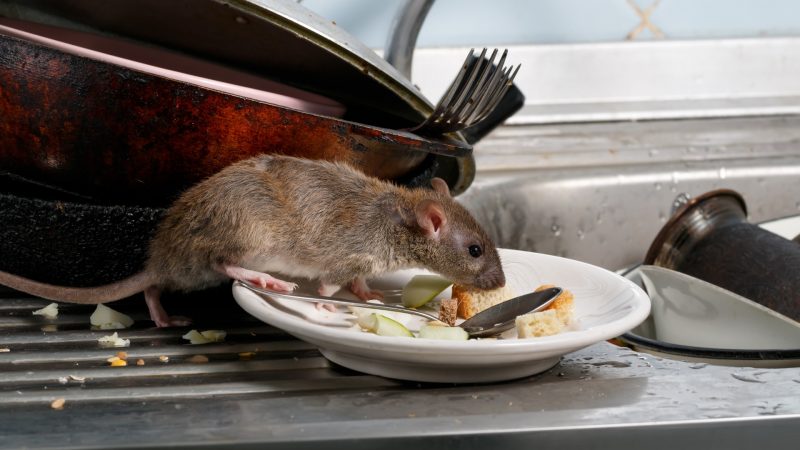
Rats generally have a vegetation-based diet, but they’ll eat meat and other animal proteins if it’s readily available. They’re foragers, so they can adapt their diets to the environment.
In urban areas, human garbage is a significant food source for rats. Farm stores, animal feed, and small fish, eggs, or even lizards are all appealing food for brown rats. Rats will seek out meat first but can survive without it if there isn’t an accessible source.
Types of Rats
While there are only two species that tend to show up in your home, there are over 60 species of rat on earth. This guide is concerned with the Norway/brown rat and the roof/black rat, as they’re typical nuisance rats.
The Norway rat is also bred as a pet. However, having a rat in your home on purpose differs from having a nuisance animal living in your walls.
Damage Caused by Rats
Rats have a reputation for seriously harming both property and people. They are well-known for being able to chew through virtually anything, including electrical wiring, wood, and plastic. This can result in fires, electrical shorts, and costly repairs.
Rats not only cause enormous harm to property but also to people’s health. Through their urine, excrement, and bites, they can spread a variety of illnesses, such as leptospirosis, hantavirus, and salmonellosis.
Additionally, it’s well known that rats draw other pests like fleas and ticks, which can infest dwellings and spread disease. Without assistance from qualified pest control specialists, this can lead to a pest infestation and a disease-transmission cycle that can be challenging to stop.
Are Rats Dangerous?
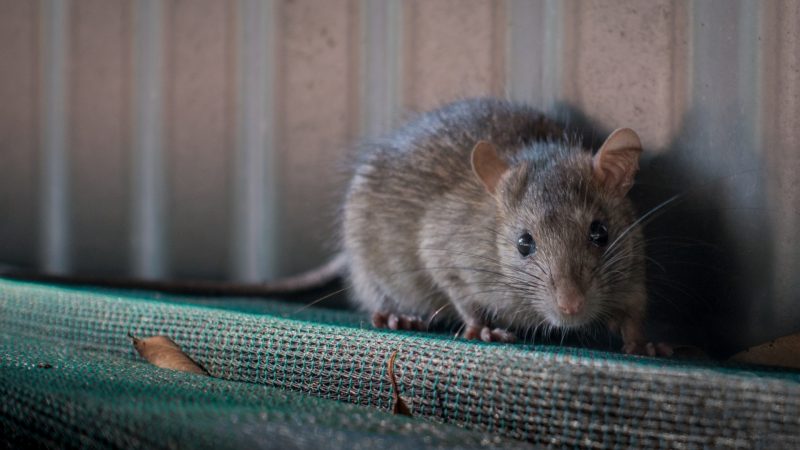
Domesticated rats aren’t dangerous as long as they’re clean and taken care of. However, wild rats can carry diseases and be aggressive if they feel threatened or sick. They can cause serious bite wounds as they have sharp teeth and a strong jaw.
Do Rats Bite?
Rats bite if they feel threatened or are trying to defend their territory. Usually, rats will only bite other rats, but if you try to handle one that’s agitated or if you frighten them, it may bite you as a defense. It’s important that you avoid letting a rat bite you, as that’s one way they can transmit diseases to humans.
Do Rats Carry Diseases?
Rats can carry several diseases, both directly and indirectly. The conditions they transmit directly come from having contact with a sick rat or its waste.
Also dangerous are the diseases that rats can give to other animals that will pass them to humans. Ticks, fleas, mites, and other insects can pick up diseases from rats and then infect humans. This added risk means that you should quickly take care of rat infestations, even if you don’t have contact with the animals.
What Diseases Do Rats Carry?
The diseases that rats can carry and pass on directly are primarily fevers, like hemorrhagic fever or hantavirus. These diseases can be severe, and you don’t even need to have contact with the animal to get infected. Breathing in their feces or eating contaminated food can also pass these diseases to you.
The indirect diseases that rats can pass to humans include Lyme disease, various typhus fevers, and the West Nile virus. The rat doesn’t need to be anywhere near you to pass on the infection for these diseases. Insects act as vectors to spread them.
Signs of a Rat Infestation in Your Home
Check the premises for the following indications if you think there are rats there:
Droppings
They are tiny, dark in color, and pellet-shaped, and you can find them in places where rats have been busy, like cabinets, behind appliances, or in shadowy places.
Gnaw Marks
Gnaw markings on food packages and other items in your house could indicate that you have a rat infestation. This also involves nibbling on storage bins, furniture, paper, and electrical cords.
Scratching Noises
It could indicate a rat infestation if you notice scratching or scurrying sounds in the flooring, ceiling, or walls. These sounds, which are more audible at night when the house is quiet, may be made by rats moving.
Nests
Rats frequently use shredded insulation, paper, or cloth to construct their nests. These nests are typically located in isolated, dark regions like attics or crawl spaces.
Bad Odor
Rats emit a characteristic musky smell that may be rather overpowering and unpleasant, especially in small areas like cellars or enclosed walls. Rats, for instance, excrete a lot of urine, which can collect in small areas and produce an overpowering ammonia-like odor. Additionally, the grease stains left by the oils that rats create in their fur have a pungent smell.
How to Get Rid of Rats? | Step-by-Step Instruction
Step 1: Inspect Your Home Thoroughly
A thorough assessment of your home is necessary to determine the cause of the infestation before you can start the rat removal process. Seek out any visible entrance ways around the exterior of the home, such as holes in the vents, cracked garage doors, damaged drains, and foundation gaps.
Examine the vents, drains, appliance lines, and other interior spaces that could be exploited as entrance points. The first step in rat-proofing your home is determining the points of entrance.
Step 2: Seal Cracks and Crevices
Rats can get into your house through tiny gaps. The tips of your thumbs can fit through gaps that they can pass through. Therefore, it’s crucial to patch up any gaps in the exterior and interior walls of your home.
Use wire wool, metal kick plates, cement, or caulk to seal these gaps for long-lasting benefits. Check them once every few months to ensure they are still in good operating order.
Step 3: Clean Up Your Home
Make sure to swiftly mop up spills, maintain your drainage systems clean, and put every one of your food and trash in containers with covers.
If you work to keep your yard and house tidy and clean, rats will be less likely to enter and remain in your home. Fallen leaves should always be picked up, old rubbish piles should be removed, and trees should always be clipped away from your roof in order to stop rats.
Step 4: Remove Potential Food Sources
When keeping pet food outdoors, always use a secure container to keep rats and other rodents out. Even with the opening folded down, an open bag emits an enticing odor that mice and rats can smell from a great distance.
To keep rats from smelling or consuming your food, store it in airtight, tightly sealed containers.
Food should never be stored in a bedroom or even on a deck. To protect the security of your food supply, you should look for evidence of rat infestation in any sacks of flour, rice, or beans that are hidden away.
Step 65: Try Home Remedies for Natural Deterrent Methods
Rats can be repelled with the help of natural therapies. Strong scents deter rats, so you can place cotton balls soaked in essential oils in potential entry points for rats into your home.
Sprinkle peppermint oil, cayenne pepper, black pepper, or cloves around the outside of the house to dissuade rats before they even try to get in. Along the line where the earth meets your foundation, freely sprinkle the material of your choice.
How Do You Get Rid of Rats in Some Specific Places?
Getting pests out of a specific part of your property requires a specific tactic. Try these tips to remove rats from hard-to-reach places.
How To Get Rid of Rats in a House Fast?
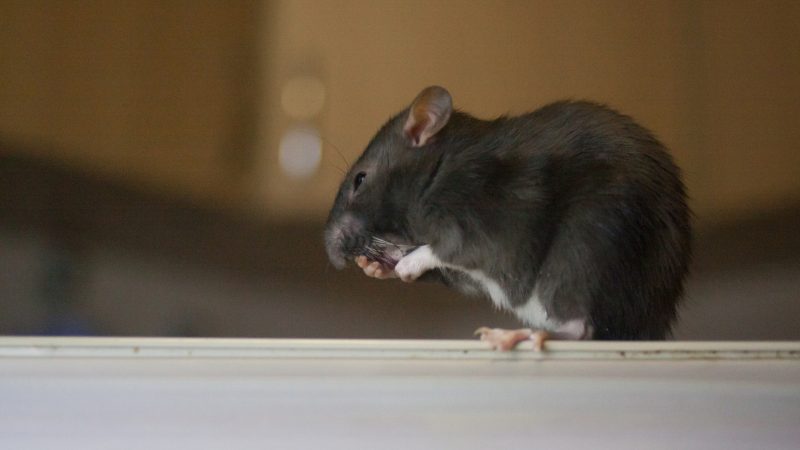
The fastest way to get rid of these pests is the riskiest. Using rat poison or chemical repellent will be swift and effective but could put pets and children in danger. If you need rats out fast, talk to a professional about your household’s needs first.
How To Get Rid of Rats in the Walls?
Getting rats out of the walls can be tricky as you likely need to lure the whole nest out to dispose of them. Rats are social creatures who protect their young, so the best way to get them out of the walls is to use a rat repellent to encourage them to leave the walls, rather than laying out poison for them to take back to the nest.
The last thing you want is for the rat colony to die inside your walls and stink up your home! Sticky rat traps are a good choice, as they’ll stop rats from heading back into the walls, but be prepared to dispose of the rats before they die of starvation in the trap.
How To Get Rid of Rats in an Attic?
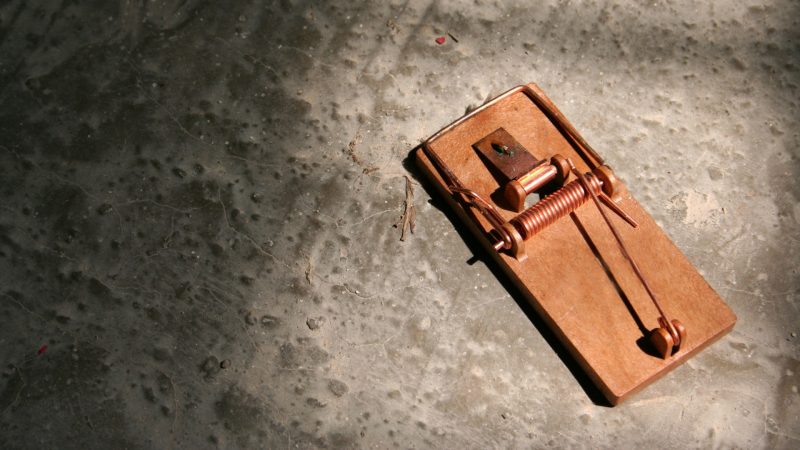
For rats that prefer the attic, you should look for roof-rat-specific traps and poisons. If you’re trapping them, you want to lure them out of their burrow or nest for more straightforward disposal later. A combination of traps and poisons will work, followed by treating the area with a rat repellent.
How To Get Rid of Rats in a Yard?
Getting rats out of your yard can be tricky, as it’s harder to control the outdoor environment. Start by protecting the perimeter of your home with a rat repellent like castor oil, peppermint oil, or ammonia, so the rats don’t seek shelter in your home.
Then, make your yard hostile to a rat population. Make sure garbage is inaccessible, keep vegetation to a minimum, and use repellants throughout your yard to discourage rats from setting up shop.
How To Get Rid of Rats in a Garage?

You can get rid of garage rats the same way you get rid of wall or attic rats – flush them out into the open with a baited trap, then dispose of them. Try to avoid leaving poisoned food out for them to take back to the burrow, or you could end up with dead rats in your garage wall.
How To Get Rid of Rats Under a House?
A rat infestation under your house is another situation where you may need a professional. To get rid of all of the rats, you need to make sure none are left behind in the nest. Depending on how your house is constructed, getting underneath it could be difficult.
You need to lure the rats out of the den and make it inhospitable so that they remove their young. This will prevent the rats from decaying under your house or surviving and causing further problems.
How To Get Rid of Rats in a Car Engine?
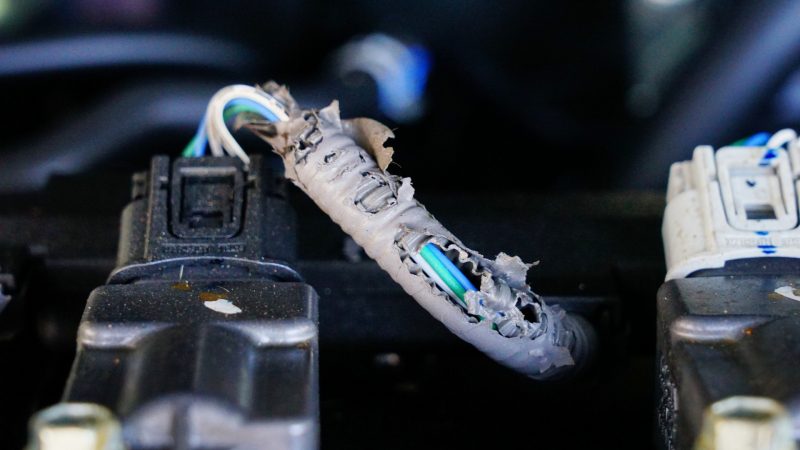
Rats in a car engine can be very dangerous. They tend to gnaw on wires and cables, so if there’s a rat infestation in your car, hire an exterminator. Don’t try to remove the rats yourself, as you could seriously injure yourself on exposed electrical wiring or with a chemical reaction between rat poison and fluid in your car.
How To Get Rid of Rats in a Chicken Coop?
Eggs are a relatively easy meal for rats, as is chicken feed, so a chicken coop is a very attractive place for rats. To make the coop unappealing to rats without harming the chickens, put bay leaves, peppermint oil, or castor oil around the perimeter of the coop. Rats hate these substances, but they won’t hurt your chickens if they come into contact.
How To Get Rid of Rats Naturally?
Chemicals and rat poisons will kill rats quickly, but there are substances that won’t put you or your family at risk and that are just as effective.
Peppermint oil is a rat deterrent that won’t harm other animals, like your pets. Sprinkling baby powder or instant mashed potatoes around can also help eliminate rats. The powder will slow the rats down and make them easier to trap and remove. The instant mashed potatoes will lure the rats out of their burrows. Once they eat the potato, it will expand in the rat’s stomach, which quickly leads to bloating and death.
Home Remedies To Get Rid of Rats
Peppermint oil and bay leaves are the easiest home remedies to rat-proof your home. Peppermint oil deters them, and bay leaves are toxic to them. Both items are readily accessible in most grocery stores and are relatively inexpensive.
- 100% pure, natural & uncut Japanese Peppermint (Mentha arvensis)...
- Steam distilled from Mentha arvensis leaves
- 16 fl oz plastic jug, w/ child-resistant cap. Ecom packaging. The...
- Fl oz are used to measure fluids/liquids while an ounces (oz.)...
- The Peppermint Essential Oil maintains a thin consistency,...
- 0.25-ounces of Happy Belly Whole Bay leaves
- The aromatic leaf from the bay laurel tree
- Whole leaves
- Use to season soups, stews, and braises, risotto, pasta sauce, or...
- Kosher certified
How To Get Rid of Rats Without Killing Them?
If you want to remove rats from your home without killing them, repellants are your best bet. These substances make a space hostile to a rat, leading the rat to leave the area independently. There are also humane traps that can catch rats without harming them, but these tend to be less effective.
How To Catch a Rat?
The best way to catch a rat is to leave traps near their preferred food source at night. They’re primarily nocturnal and are more likely to venture out of the nest when your household is quiet.
In the following video you can find out how to make different rat traps at home:
How To Keep Rats Away?
Keeping rats away starts with keeping your home from being inviting. Secure food and garbage so that the odors don’t attract pests, and keep loose items like flour or cereals in air-tight containers so that even if a rat does smell them, it won’t be able to eat them.
Treating the perimeter of your home with peppermint oil will add an extra layer of protection, and regularly checking for any places rats may be entering your home and sealing them off can stop an infestation in its tracks.
What Keeps Rats Away? Best Products To Use
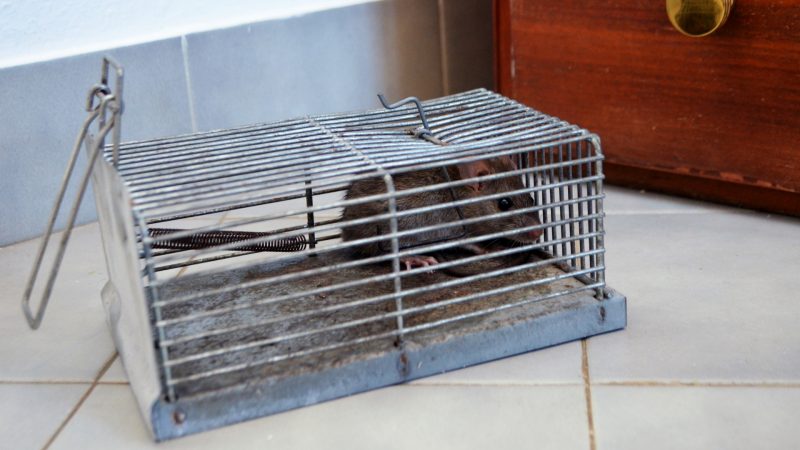
There are a variety of chemical and natural rat repellants and traps that can keep your home rat-free.
Best Rat Traps
The best rat trap is a Havahart One-Door trap, which you can get from Amazon.com. These traps are humane and won’t kill the rat. They won’t leave you with a gross mess to clean up or leave out dangerous poisons. The rat will walk into the trap to take the bait, and the door will close after it. You can then release the rat wherever you like.
No products found.
Best Rat Repellents
Peppermint and castor oil are the best rat repellants out there. You can mix your own or use a store-bought repellent that contains both, like Eco Defense Rodent Repellent from Amazon.com. It uses both oils for an environmentally safe rat-prevention spray.
No products found.
Three Important Things to Do After Getting Rid of Rats
It’s still crucial to sanitize your house after the rats have left. Any areas the rats may have visited, such as those close to access points or around food sources, should be cleaned and disinfected using bleach or other cleaning supplies/
Additionally, you should get rid of any contaminated possessions you may have. It is recommended to err on the side of caution and dispose of anything you are unsure whether it is contaminated.
Avoiding rat infestations in the first place is the best approach to get rid of them. Make sure all external doors and windows have snug-fitting screens, and patch up any cracks or fissures that could serve as entryways all around the property. Pet food shouldn’t be left out at night, and trash cans should be kept tightly locked.
List of Sources
Schmidly, D. J., Bradley, R.D. (2020). The Mammals of Texas: Norway Rat or Brown Rat. Natural Science Research Laboratory.
Centers for Disease Control and Prevention. (2019). Diseases transmitted indirectly by rodents.
Centers for Disease Control and Prevention. (2017). Diseases directly transmitted by rodents.
Davies, E. (2016). The world’s largest rats are the size of small dogs. BBC Earth.
Animal Care and Use Committee: The Rat. Johns Hopkins University.
- Bed Bug Surge 2025: How to Detect, Prevent, and Safely Eliminate Infestations in Top U.S. Cities - June 18, 2025
- Asian Needle Ants Invade US Homes: 2025 Guide to Identification, Risks, and Effective Control - June 11, 2025
- New World Screwworm Alert: How US Livestock Owners Can Prevent Outbreaks and Protect Herds [Summer 2025 Update] - June 8, 2025


